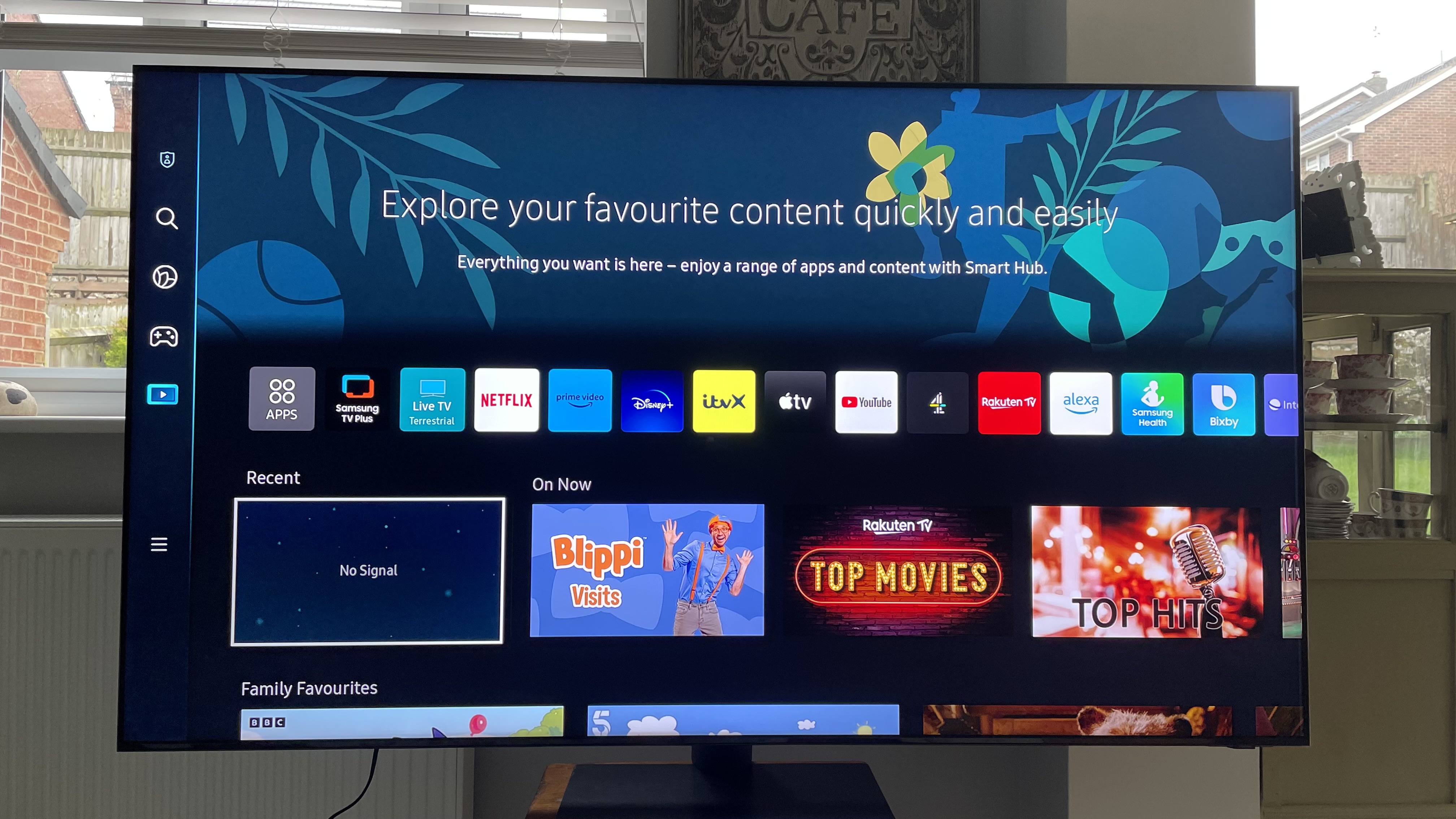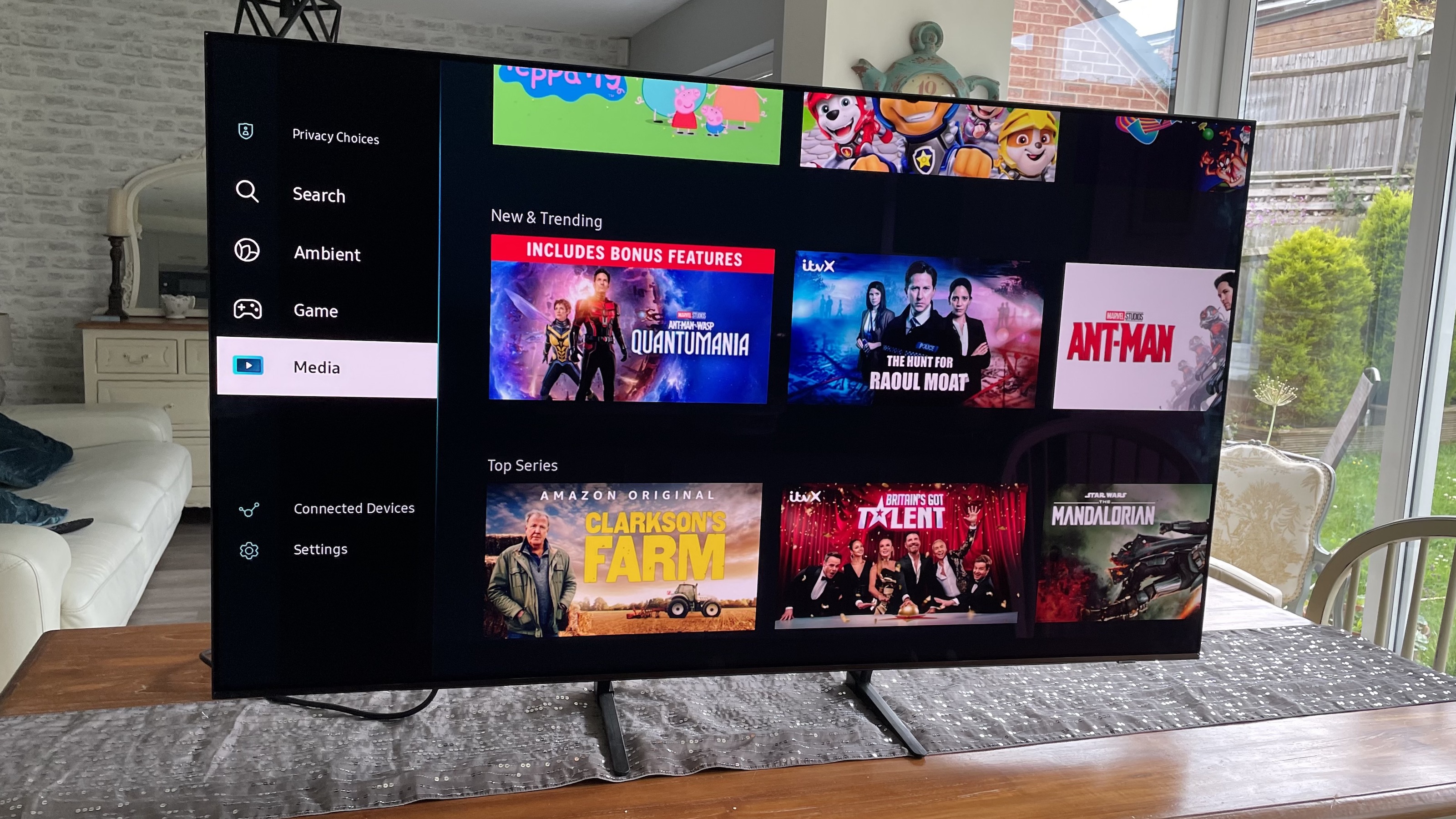How bright does your 4K TV need to be? We explain how OLED and mini-LED compare
Taking the measure of a much-hyped spec

How bright does a TV really need to be? As TechRadar plows steadily through our testing of new TVs introduced in 2023, it's a question that regularly crops up.
Something many of this year’s best TVs share in common is improved light output, with even the best OLED TVs exceeding the brightness of last year’s models by as much as 40% at times. A prime example of this is the Samsung S95C, the company’s flagship QD-OLED, and one that improves on its S95B predecessor in several key ways.
Pricing is another area where the S95C tops last year’s model. Samsung’s new flagship costs $3,299 / £3,599 / AU$4,999 for a 65-inch screen whereas the S95B cost $2,799 / £2,999 for the same screen size at launch. Given the S95C’s high price, you might be looking at other high-brightness TV options, and you’ll easily find them in the mini-LED TV category, with budget models such as the TCL QM8 and Hisense U8K providing even higher peak light output than the Samsung S95C but at a considerably lower cost.
But is brightness the most important factor when it comes to picture quality? And why would you want your TV’s screen to be blazingly bright in the first place?

Daytime TV
Let’s tackle that second question first. High screen brightness is helpful for viewing in environments where there is a high level of illumination from lamps, overhead lights, and undraped windows. In such situations, extra brightness helps to reduce the negative effect of light reflected off the screen – otherwise known as screen glare – and make image highlights pop in a dynamic manner.
In a similar environment, a TV with more limited light output will look comparatively dull, and unless it has anti-glare coating – a feature typically reserved for higher-end models – you may see distracting screen reflections that obscure detail, and that can even further dull the picture’s impact by elevating the brightness level in dark parts of the picture.
High screen brightness is also helpful for fleshing out highlight details in 4K movies and TV shows with high dynamic range. Many HDR programs, whether on disc or from streaming services, are mastered for 1,000 nits of peak brightness, though some may have even higher brightness peaks – as high as 4,000 nits.
Sign up for breaking news, reviews, opinion, top tech deals, and more.
If your TV is unable to fully display content that extends into the 1,000 nits or above range – typically bright white highlights like sunlight reflected on water – it will use “tone mapping” to downscale brightness peaks in the image to a level it can handle. But with a TV that’s capable of displaying brightness peaks higher than 1,000 nits, tone mapping won’t be engaged and the same program will have a more naturally dynamic, high-contrast look.

How bright is bright enough?
Now to the question of whether brightness is the most important factor for picture quality. We’ve already established the benefits of high light output for bright room viewing and capturing HDR highlight detail. But when watching in a dim or dark environment, there’s less need for high peak brightness, and an overly bright TV can cause eye fatigue.
I was reminded of that scenario when reading TechRadar contributor John Archer’s review of the Samsung S90C, a step-down QD-OLED model in the company’s lineup that has lower peak brightness than the flagship S95C. To quote from John’s review: “...I can actually see some home theater fans, especially those fond of watching films in darkened room settings, potentially preferring the slightly gentler, less explosively dynamic look of the S90C’s pictures to those of the blazingly intense S95C.”
That perspective mirrored my own experiences when reviewing the TCL QM8, a TV capable of reaching 2,321 nits in its Movie picture mode. When watching movies and TV shows in a dimmed room, the TCL’s brightness seemed excessive – I needed to lower that setting by as much as 50% from the maximum setting in order to view comfortably. At the new brightness level, the set’s image still retained its dynamic quality, and I didn’t once feel shortchanged when viewing content with HDR.
The takeaway here for me is that a TV that can manage around 1,000 nits should be fine given the “theater style” lighting conditions I usually opt to view in – ie, not letting sunlight stream in and wash the picture out. With its 1,100 nits peak light output, I think the Samsung S90C would be a perfect contender for placement in my home theater. Also, when I reviewed the LG C3 OLED, a TV that, with its 830 nits peak light output, is on the lower end of my target brightness range, I found it to have great overall picture quality, with notably punchy contrast due to OLED's perfectly deep blacks.
Are there significant differences between high-brightness OLEDs like the Samsung S95C and models with a more modest light output like the LG C3? Aside from the S95C being able to hold up as well as a mini-LED model in bright rooms, you should see a finer degree of highlight detail in some programs. That comes down to the tone mapping situation discussed above, with brighter TVs having less need to engage tone mapping when displaying shows with HDR.

The full-screen story
Along with peak brightness, another TV specification relevant to this discussion is full-screen brightness, which gets measured using a full white window covering 100% of the screen. As you might expect, mini-LED TVs such as the TCL and Hisense models mentioned above cruise past the competition on this spec, with both models delivering full-screen brightness in the 700-750 nits range as compared to the 260 nits you can expect from top-end OLEDs like the Samsung S95C.
Mini-LED’s full-screen brightness advantage will ensure that content with lots of light areas in the image – sports, for example – looks plenty bright even in well-lit rooms, busting past even the toughest reflections. But here again, we get an example of how extreme brightness isn’t everything when it comes to TVs. Typical objects in HDR images – a red car, a human face – fall in the 1-250 nits range. A good OLED TV can easily cover that in small areas, while top OLED models such as the Samsung S95C can manage it across their full screen area.
Conclusion
To sum up, having high TV brightness on tap is very useful for viewing in well-lit rooms or for daytime viewing of sports. Full-screen brightness makes a huge difference for stopping reflections overcoming what you're trying to actually look at.
But sets that deliver more modest light output – in the 1,000 nits range, for instance – are more than adequate for viewing programs with HDR in dimmer light environments, and they’ll also look good enough with the lights turned up, especially if they have an anti-glare screen coating.
Any brightness beyond that is icing on the cake, really, and will help give you that last, extra picture quality push when viewing in any lighting conditions, including if you have a room that gets flooded by sunlight.
You might also like
- TCL QM8 vs Hisense U8K: which budget mini-LED TV is best?
- The best QLED TVs are catching up to OLED TVs
- The end for regular OLED TVs is nigh

Al Griffin has been writing about and reviewing A/V tech since the days LaserDiscs roamed the earth, and was previously the editor of Sound & Vision magazine.
When not reviewing the latest and greatest gear or watching movies at home, he can usually be found out and about on a bike.